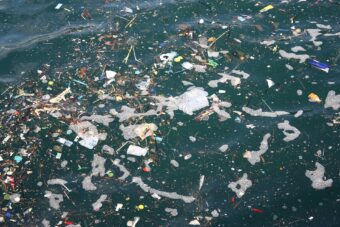
After a piece of plastic enters a water system, such as a sea, ocean, river, or lake, it undergoes degradation due to the influence of sunlight, wind, and water.
A large piece breaks down into micro and eventually into nanoplastics. Although nanoplastics are invisible to the human eye, with a comparison often made to their being much thinner than a human hair, their accumulation poses a serious threat to aquatic ecosystems.
Due to their small size, nanoplastics easily enter organisms like plankton, which ingest them along with water. When larger marine creatures feed on plankton, they unknowingly ingest nanoplastics as well. In this way, nanoplastics are passed through the food chain.
Scientists at the University of Missouri have developed an innovative solution for removing nanoplastics from water. This involves a special solvent or liquid that is hydrophobic. The solvent is made from natural, non-toxic ingredients, making it environmentally safe, but its effectiveness lies in its hydrophobic nature, meaning it repels water.
More:
- More Bioplastics for Less Microplastics
- The world’s Corals are Bleaching – Here’s Why
- Global Fund for Coral Reefs Approves More than 25 million USD in Additional Funding for Resilience Action
To better explain the process, the scientists compared this liquid to oil, which does not mix with water but instead floats on its surface. The process works by first mixing the liquid with water, allowing it to come into contact with the nanoplastic particles and bind them, acting like a magnet. After mixing, the liquid naturally separates from the water and rises to the surface, carrying the nanoplastics with it. Once this layer rises to the surface, it can be easily removed, leaving behind clean water.
However, the entire process currently remains at the laboratory level. In such conditions, scientists used a pipette to carefully remove the solvent from the surface of the water, along with the nanoplastics. The results showed that this method can remove up to 98 percent of nanoplastics from water.
Although the method is still in the testing phase, further research could significantly contribute to reducing this type of pollution in real-world conditions.
Katarina Vuinac

